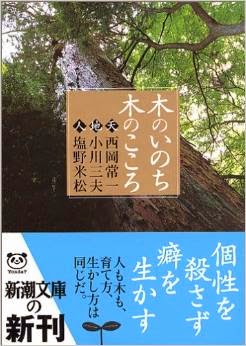One of the things that my home country, Japan, prides
itself is having the world's oldest surviving wooden structure, Horyuji (Horyu
Temple). It was built more than 1,300 years ago, during the Asuka Period (beginning
of A.D. 8th century). It stands beautifully even today, thanks to generations
of craftsmen who have passed on the wisdom and skills to honor and maximize the
life of the trees.
To me, the strongest critique against today’s
test-driven, standards-based ed “reform” comes from the simple words of such a
craftsman:
Of all the materials used for these buildings, there is nothing that is standardized. There is nothing that is identical, not even among the one thousand square bearing blocks, or posts that are lined up. Taking a closer look, you’ll see that each one is uneven. Each was made by craftsmen with heart and soul. You see how beautifully they stand in that nature. There is a harmony despite the unevenness. You cannot achieve such beauty with standardized, all-identical materials. It’s good precisely because they are uneven. Human beings are the same. Because there is nothing in the nature that is identical, it is our wisdom that finds ways to harmonize them. [1]
Each child is different.
Nature reminds us to live,
and live beautifully.
and live beautifully.
[1] 『木のいのち 木のこころ』 新潮文庫 p. 82
Original passage in Japanese (English
translation by Daiyu Suzuki)
「これらの建物[法隆寺や薬師寺]の各部材には、どこにも規格にはまったものはありませんのや。千個もある斗にしても、並んだ柱にしても同じものは一本もありませんのや。よく見ましたら、それぞれが不揃いなのがわかりまっせ。どれもみんな職人が精魂を込めて造ったものです。それがあの自然のなかに美しく建ってまっしゃろ。不揃いながら調和が取れてますのや。すべてを規格品で、みんな同じものが並んでもこの美しさはできませんで。不揃いやからいいんです。
人間も同じです。自然には一つとして同じものがないんですから、それを調和させていくのがわれわれの知恵です。」
